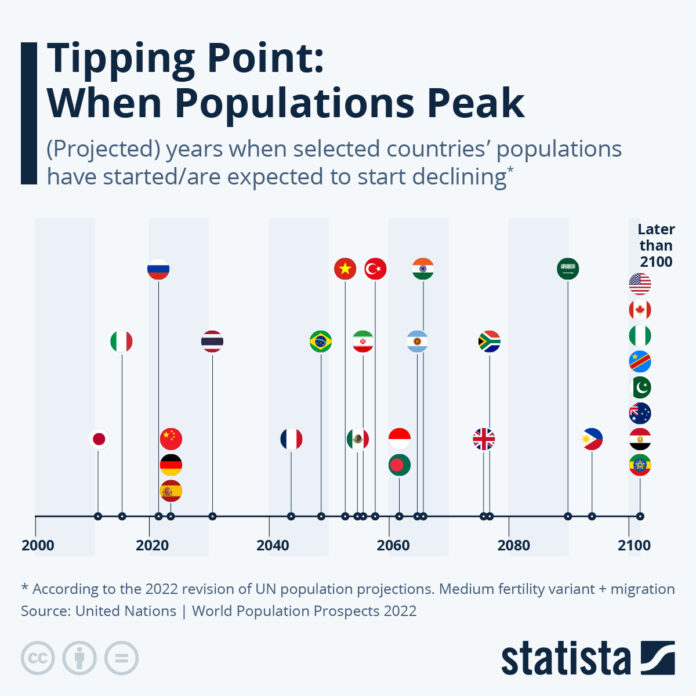Tipping Point: When Populations Peak
As yesterday marks World Population Day, we’re taking a closer at one of the population trends that will affect many countries sooner or later in the 21st century: population decline. Especially prevalent across Europe and developed Asia, Statista’s Felix Richter reports this demographic trend is a consequence of declining birth rates and ageing populations and poses significant challenges to the countries affected.
You will find more infographics at Statista
In countries like Japan and Italy, where population decline has begun in 2011 and 2015, respectively, fertility rates have long fallen below the replacement level of 2.1 percent, influenced by factors such as higher education and career opportunities for women, shifts in societal norms regarding family and childbearing and an ageing overall population.
Countries with declining populations face a number of challenges, both economic and social. Economically, a shrinking workforce can lead to labor shortages, reduced productivity and increased pressure on social welfare systems. With fewer working-age individuals to support a growing elderly population, the financial burden on pension systems and healthcare services intensifies. Socially, a declining population can result in the depopulation of rural areas, shrinking communities and the ensuing challenges in maintaining infrastructure and public services.
Addressing these issues requires comprehensive strategies and strategies. Raising the retirement age or increasing taxes/social contributions can help alleviate the financial burdens associated with a demographic imbalance. Policies to support work-life balance and affordable childcare can help slow the population decline and immigration of young, skilled workers can help address the labor shortages and increase productivity.
According to the latest revision of the United Nation’s World Population Prospects, many countries will face these challenges within this century if they do not already, such as the aforementioned Japan and Italy and China and Germany, which were expected to see their first population decline in 2023.
France’s population is expected to start declining in 2043, Brazil’s in 2048 and even India’s vast population is projected to start shrinking in 2065.
Among developed nations, the United States, Canada and Australia are notable exception, with none of them currently expected to see their first population decline in the 21st century.
Geographically, many African nations are still growing rapidly, resulting in a continental shift in global population that will see countries like Nigeria, the Democratic Republic of Congo, Ethiopia and Tanzania among the most populous nations in the world by 2100.
Tyler Durden
Fri, 07/12/2024 – 22:30


